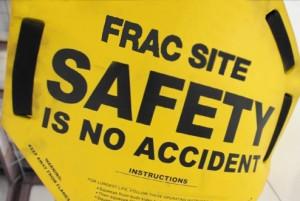 The frac environment can be a dangerous – or safe – place. It depends on the attention fleet managers pay to logistics operations, vehicle technology, and driver habits.
The frac environment can be a dangerous – or safe – place. It depends on the attention fleet managers pay to logistics operations, vehicle technology, and driver habits.
Most worksites in the upstream oil and gas business can be dangerous places. But suppliers and fleet managers can go a long way to mitigating the risks by optimizing the advantages afforded by supply chain logistics, vehicle technology and driver performance.
During a presentation on “Drilling Down into Oil and Gas Safety” at the fourth annual Frac Sand Supply & Logistics conference in San Antonio, Ryder executives discussed the connection between safety, fleet management, and supply chain solutions. They revealed how managing these factors is critical to reducing incidents that can cause injury and damages.
In reviewing data from an eight-month pilot of 140 units outfitted with safety technology, Ryder found a 37 percent reduction in crashes involving rear-ending another vehicle, rollovers, and leaving the roadway. How can your organization use technology to improve safety along the supply chain?
- Tap tech’s strengths. Active collision avoidance technology with adaptive cruise control and dynamic braking capabilities, rollover protection and stability control, and lane departure warning systems, can all alert the driver to hazardous situations and can potentially avoid or mitigate crashes. Video event recorders with forward- and inward-looking cameras can provide objective records of driver performance and the events leading to collisions. This can be essential for improving drivers’ on-road behaviors and in defending fraudulent claims.
- Marry tech and HR. By melding the latest technology and more traditional human resource programs, policies and procedures, organizations can promote and encourage safety among drivers. Improving seatbelt use, reducing mobile phone dialing and texting, as well as curbing speeding or unsafe following distances, all create better outcomes.
- Observe the data stream. By tracking, reviewing, and aggregating behavior-based data, like fuel economy, idle time, and hard braking, organizations can learn more about driver habits.
- Use tech to train for better behavior. In addition to good policies, driver training is critical to improving adoption of safety practices. Fleet managers can use data to reinforce good habits and coach out the bad. In fact, experience shows that when managers do a good job introducing technology, explaining how it works, what it can and cannot do, and how it will help the drivers – even showing how it can help exonerate a driver following a crash – driver acceptance is enthusiastic.
- Adopt tech sooner than later. Existing and coming rule changes from the U.S. Department of Transportation will mandate greater use of computers. Why wait? Working with a knowledgeable and experienced logistics provider can shed light on both the safety and financial benefits of technology. This can help eliminate unfounded delays in implementation like concerns about high up-front costs – delays that can negatively affect both safety and your bottom line.
Authored by Randy Tomlinson
Randy Tomlinson is Director of Safety, Health, and Security for Ryder, with a focus on the Oil & Gas vertical. He has more than 30 years’ experience in transportation safety across a wide range of industries, and currently is responsible for innovative creation and hands-on implementation of safety solutions for the oil and gas industry.

